The World of Dinosaur Fossils
Dinosaurs ruled the Earth for over 160 million years, leaving behind an incredible legacy that has captivated scientists and the public alike. While these majestic animals disappeared around 66 million years ago, they left a trail of clues in the form of fossils—natural records embedded in the rocks beneath our feet. These fossilized dinosaur remains continue to provide insight into the lives, behaviors, and environments of the ancient reptiles that once walked our planet.
What Makes a Dinosaur a Dinosaur?
While many prehistoric animals are often lumped together under the term “dinosaurs,” not all ancient reptiles qualify for this classification.
True dinosaurs are specifically defined as archosaurs with erect hind limbs positioned directly beneath the body—a key anatomical feature that distinguishes them from other reptilian contemporaries. This upright posture enabled more efficient locomotion and supported their often massive bodies.
Popular creatures like pterosaurs, mosasaurs, ichthyosaurs, plesiosaurs, and Dimetrodon are frequently mistaken for dinosaurs, but they do not meet the strict scientific criteria. Pterosaurs, for instance, were flying reptiles and close relatives of dinosaurs within the clade Ornithodira, while mosasaurs, ichthyosaurs, and plesiosaurs were marine reptiles.
Dimetrodon, although often portrayed as dinosaur-like, was actually a synapsid, more closely related to mammals than to reptiles. These differences underscore the importance of anatomy in taxonomy and highlight the diversity of life forms that once inhabited prehistoric Earth.
Origins and Early Evolution of Dinosaurs
Dinosaurs first emerged during the Middle to Late Triassic period, around 230 million years ago, shortly after the massive Permian–Triassic extinction. Early dinosaurs like Eoraptor and Herrerasaurus were small, bipedal predators, as revealed by fossils from formations in Argentina, Brazil, and Zimbabwe.
At that time, dinosaurs were not yet dominant, competing with other prehistoric reptiles such as pseudosuchians and therapsids. Over time, as many competing groups went extinct during later Triassic events, dinosaurs diversified and began to fill ecological niches, setting the stage for their dominance in the Jurassic and beyond.
Anatomical Features That Define Dinosaurs
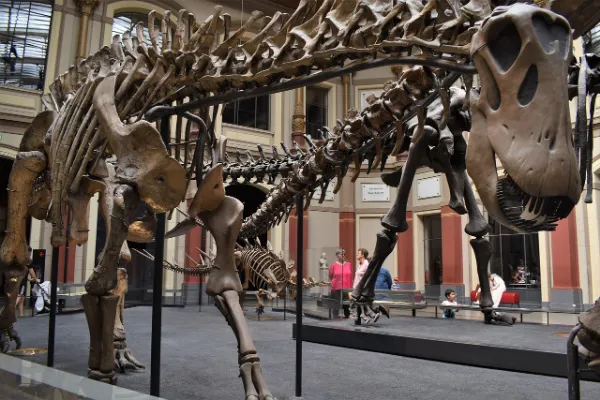
Despite ongoing discoveries that continue to refine our understanding, paleontologists have identified a set of core anatomical traits that distinguish dinosaurs from other archosaurs.
These shared derived characteristics, known as synapomorphies, were inherited from the most recent common ancestor of all dinosaurs and passed down to their descendants.
Many of these traits represent significant modifications to the ancestral archosaur skeleton, allowing for more efficient movement, stronger musculature, and unique skeletal structures.
A landmark study by paleontologist Sterling Nesbitt identified twelve clear synapomorphies of Dinosauria. These include features such as a supratemporal fossa in the skull, epipophyses on the neck vertebrae, and a deltopectoral crest located a third of the way down the humerus.
Other traits include a shorter radius relative to the humerus, a uniquely shaped fourth trochanter on the femur for powerful tail muscle attachment, and distinct configurations in the ankle bones, pelvis, and tibia.
These structural adaptations helped early dinosaurs evolve into the dominant terrestrial vertebrates of the Mesozoic Era.
Interestingly, some of these traits are also found in close relatives like silesaurids, blurring the line between true dinosaurs and their nearest evolutionary kin, yet reinforcing the idea of a tightly knit lineage defined by specific, inherited skeletal traits.
Dinosaurs, Archosaurs, and Their Distinctive Gaits and Pelvic Structures
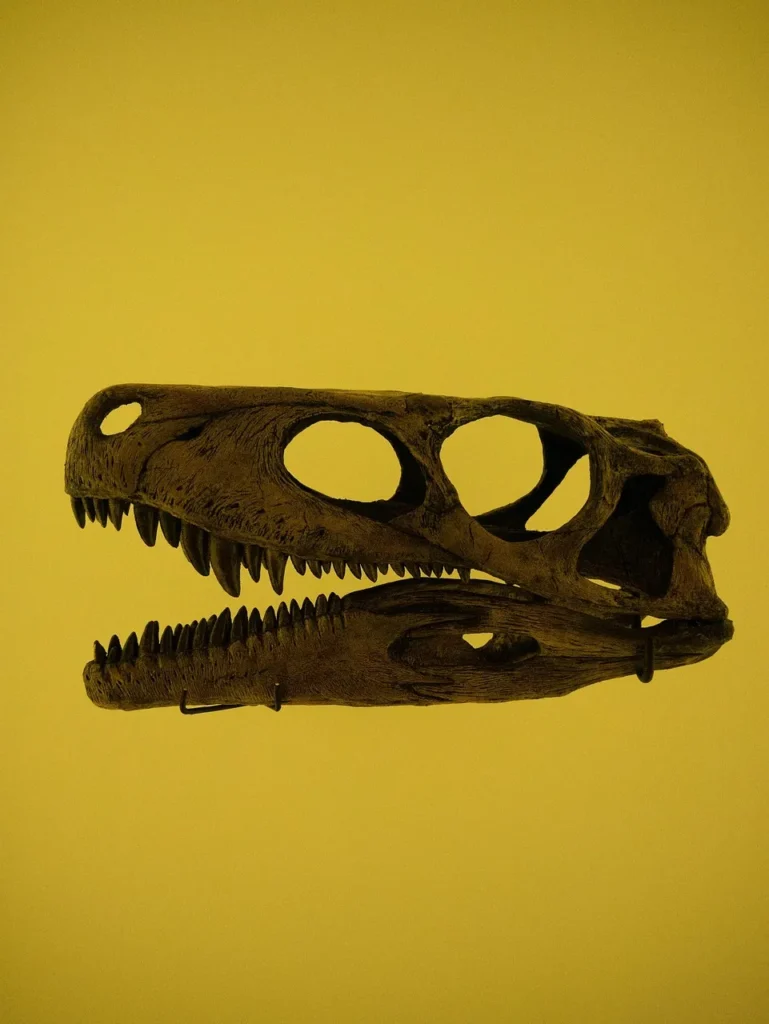
Dinosaurs are part of the larger archosaur group, which also includes modern crocodilians. A key difference is in their gait: dinosaurs walked with legs positioned directly beneath their bodies, unlike the sprawling legs of lizards and crocodilians.
Within dinosaurs, there are two main branches—Saurischia and Ornithischia—distinguished primarily by their pelvic structures.
Saurischians, meaning “lizard-hipped,” have a forward-pointing pubis bone, while ornithischians, or “bird-hipped” dinosaurs, have a pubis oriented backward, superficially resembling modern birds. Interestingly, despite this, birds actually evolved from saurischian dinosaurs, making them “lizard-hipped” by ancestry rather than ornithischian.
Saurischians include theropods, like Tyrannosaurus and birds, as well as long-necked sauropodomorphs, while ornithischians were mostly herbivores with diverse body forms.
Largest and Smallest Dinosaurs

Scientists can only estimate the largest and smallest dinosaurs because fossil records are incomplete and often fragmentary. Among the largest, Argentinosaurus may have reached lengths of up to 40 meters (130 ft) and weighed as much as 100,000 kilograms (110 tons), while Bruhathkayosaurus might have been even bigger, possibly rivaling the largest animals ever.
The biggest carnivorous dinosaur was Spinosaurus, measuring up to 18 meters (59 ft) long. On the opposite end, the smallest dinosaur alive today is the bee hummingbird, just 5 centimeters (2 inches) long, and the smallest known non-avian dinosaur, like Anchiornis, was about pigeon-sized. These size extremes highlight the incredible diversity of the dinosaur lineage.
What Are Dinosaur Fossils?
A fossil is the preserved remains or impression of a once-living organism. Dinosaur fossils typically include bones, teeth, footprints, skin impressions, and even fossilized dung (coprolites). Over millions of years, these remnants are preserved through processes such as mineralization, where organic materials are gradually replaced by minerals like silica or iron, turning them into stone.
Fossils are more than just bones—they are windows into prehistoric ecosystems, offering a tangible link to a world long gone.
The Fossilization Process
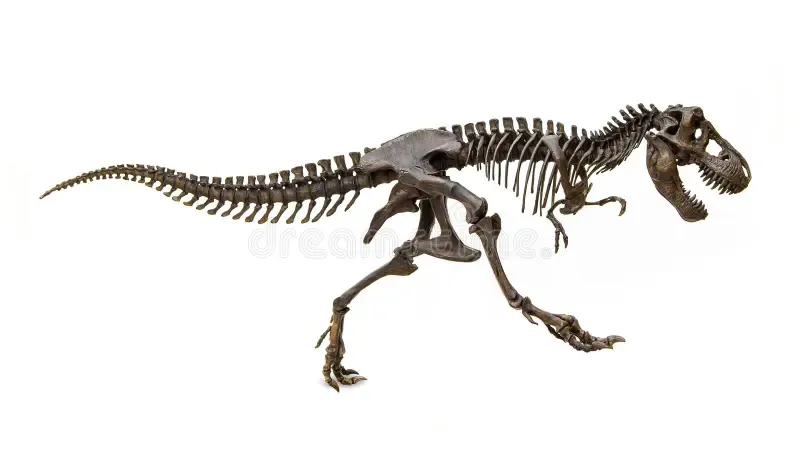
The path from a living dinosaur to a fossilized skeleton is a rare and complex journey. It begins when a dinosaur dies in a place where it is quickly buried by sediment, such as a riverbed, lake, or volcanic ash. Over time, layers of sediment accumulate, compacting and protecting the remains from scavengers, erosion, and decay.
As mineral-rich groundwater percolates through these layers, minerals gradually replace the organic tissues, preserving the structure of the bones. Eventually, these minerals harden into rock, encapsulating the fossil in the Earth’s crust.
Because this process is so specific, fossilization is rare. Most organisms decompose completely, leaving no trace behind. This rarity makes every fossil discovery scientifically valuable.
Types of Dinosaur Fossils
There are several types of dinosaur fossils that help paleontologists piece together the story:
1. Body Fossils
These include bones, teeth, and shells—the physical remains of the organism. Body fossils are most commonly associated with dinosaurs and form the basis for skeletal reconstructions found in museums.
2. Trace Fossils
These provide evidence of an animal’s behavior. Examples include footprints, trackways, burrows, nests, and coprolites. A set of fossilized footprints can reveal how a dinosaur moved, whether it traveled alone or in herds, and even how fast it could run.
3. Impression Fossils
These are imprints left in soft sediment that later hardened into rock. Skin impressions, feather traces, and plant fossils are examples. Such discoveries can reveal details like scale patterns or feather arrangements.
4. Gastroliths
Some dinosaurs swallowed stones to help grind plant material in their stomachs. These smooth, polished stones are sometimes found in association with dinosaur remains.
Soft Tissue and Molecular Preservation in Dinosaurs
Beyond bones, some dinosaur fossils preserve soft tissues such as skin, organs, and even molecular structures. Skin impressions, often made of keratin, have been found in many dinosaur groups since the 19th century, providing clues about their texture and appearance.
Exceptional fossil sites in China, like the Jehol and Yanliao biotas, have revealed feather-like structures and even traces of color pigments called melanosomes, allowing scientists to reconstruct the likely colors of dinosaurs such as Sinosauropteryx and Psittacosaurus.
In rare cases, fossils like Scipionyx preserve internal organs, offering unprecedented insight into dinosaur anatomy and biology.
Dinosaur Fossil Eggs
Dinosaur fossil eggs provide valuable insights into the reproductive biology and behavior of these ancient animals.
Fossilized eggs have been discovered worldwide, ranging from solitary specimens to entire nesting grounds, revealing how some dinosaurs cared for their young.
The eggs vary in size, shape, and shell texture, reflecting the diversity of dinosaur species. Some fossils even preserve embryonic remains, allowing scientists to study development stages before hatching.
These discoveries help paleontologists understand dinosaur incubation strategies, nesting environments, and evolutionary links to modern birds.
The Discovery and Naming of Dinosaurs
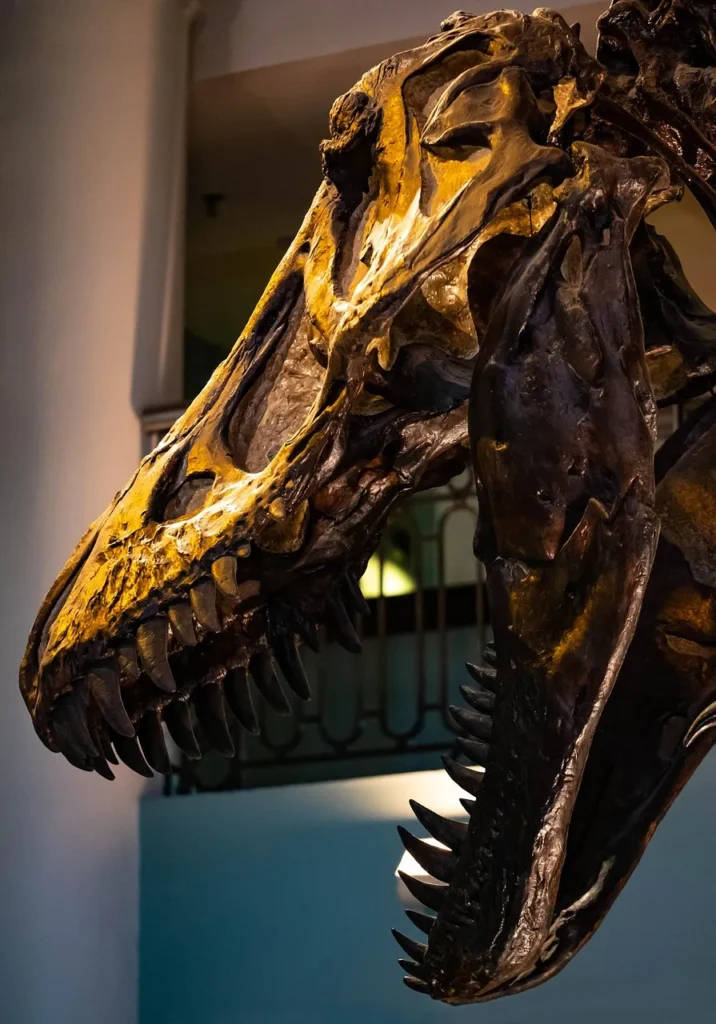
The history of dinosaur fossils dates back to the early 19th century, when large, mysterious bones began to be unearthed in Europe. At the time, scientists and naturalists were puzzled by these giant remains, which clearly belonged to ancient reptiles unlike any living species.
In 1842, British paleontologist Sir Richard Owen formally recognized these creatures as a distinct group of prehistoric animals. He coined the term “Dinosauria”, meaning “terrible lizards,” derived from the Greek words deinos (terrible) and sauros (lizard).
Owen’s classification united several fossil finds—including Megalosaurus, Iguanodon, and Hylaeosaurus—under a single name, marking the birth of modern dinosaur science. This foundational moment helped spark widespread interest in paleontology and set the stage for centuries of discovery.
Pre-Scientific Encounters with Dinosaur Fossils
National Geographic
Long before the rise of modern science, humans encountered dinosaur fossils without understanding their true origins. In ancient China, these massive bones were interpreted as the remains of dragons, mythical creatures central to Chinese folklore.
Historical texts such as the Huayang Guo Zhi (華陽國志), compiled by Chang Qu during the Western Jin Dynasty (265–316 AD), documented the discovery of these so-called “dragon bones” in regions like Wucheng, Sichuan Province.
For centuries, villagers in central China excavated these fossils and ground them into powder for use in traditional medicine, believing they held curative powers.
In Europe, similar fossil finds led to equally imaginative interpretations. Massive bones embedded in rock were often attributed to giants, monsters, or creatures from biblical tales, reinforcing local myths and religious beliefs.
It wasn’t until the development of modern paleontology in the 18th and 19th centuries that the scientific community began to correctly identify these remains as belonging to an entirely extinct group of ancient reptiles.
These early misinterpretations, however, reflect a deep and enduring human fascination with the natural world—and the mysteries buried beneath it.
Famous Fossil Discoveries
Over the past two centuries, fossil discoveries have reshaped our understanding of dinosaurs:
- Archaeopteryx: Found in Germany in the 1860s, this fossil showed both reptilian and bird-like features, bridging the gap between dinosaurs and modern birds.
- Sue the T. rex: Discovered in South Dakota in 1990, this nearly complete Tyrannosaurus rex skeleton is one of the most famous and scientifically important dinosaur fossils ever found.
- Feathered Dinosaurs in China: Since the 1990s, sites like the Liaoning Province have yielded exquisitely preserved fossils of feathered dinosaurs, providing compelling evidence of the evolutionary link between birds and theropods.
The Birth of Dinosaur Science in England
The scientific recognition of dinosaur fossils began in 17th-century England, long before the word “dinosaur” existed. In 1676, a large bone fragment—now known to be the femur of a Megalosaurus—was unearthed in a limestone quarry near Chipping Norton, Oxfordshire.
It was studied by Robert Plot, chemistry professor at Oxford and the first curator of the Ashmolean Museum. Although he accurately identified it as the leg bone of a large, unknown animal, he interpreted it within the mythological framework of the time, suggesting it belonged to a giant human or Titan.
Later, in 1699, Edward Lhuyd, a contemporary of Isaac Newton, published a description of a fossilized sauropod tooth under the name Rutellum impicatum—the first scientific description of a dinosaur fossil.
Major progress came in the early 19th century. Between 1815 and 1824, Rev. William Buckland, the first professor of geology at Oxford, described Megalosaurus in a scientific journal, making it the first officially named non-avian dinosaur.
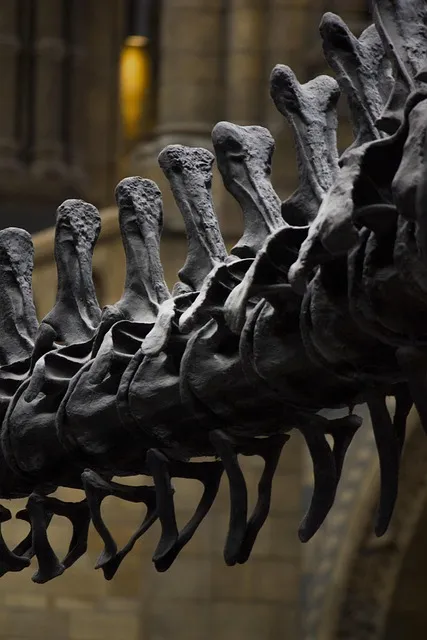
Around the same time, Gideon Mantell and his wife Mary Ann Mantell discovered and described the fossilized teeth of Iguanodon, noting their resemblance to modern iguanas. This work, published in 1825, cemented Iguanodon as the second dinosaur genus to be scientifically recognized.
The pivotal moment in dinosaur science came in 1842, when Sir Richard Owen, a leading British paleontologist, coined the term “Dinosauria” to describe this new group of prehistoric reptiles.
Drawing from the Greek words deinos (“terrible” or “great”) and sauros (“lizard”), Owen intended the name to reflect both the power and majesty of these creatures—not merely their fearsome appearance.
He classified Megalosaurus, Iguanodon, and Hylaeosaurus under this new group based on shared anatomical features. Interestingly, Owen did not mention the term “dinosaur” during his original 1841 presentation to the British Association for the Advancement of Science; it appeared only in the revised text published in 1842.
With support from Prince Albert, Owen went on to establish the Natural History Museum in London, helping to solidify paleontology—and dinosaurs—as a major scientific and public interest.
America’s First Dinosaur and the Bone Wars
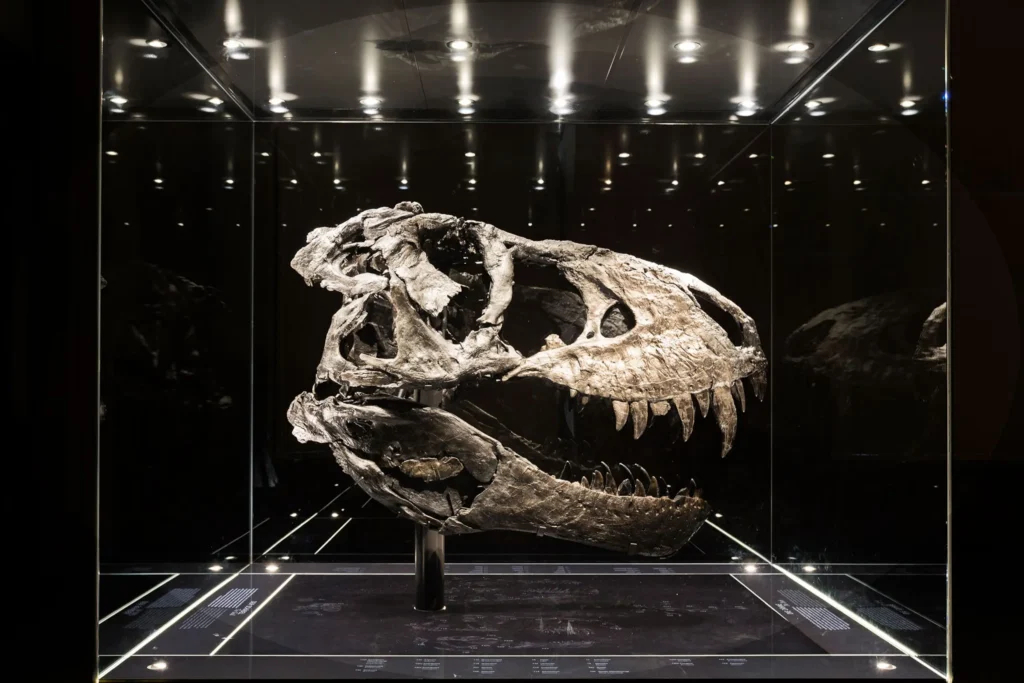
The discovery of Hadrosaurus foulkii in 1858 by William Parker Foulke in Haddonfield, New Jersey, marked a turning point in American paleontology.
Although earlier fossils had been found in the United States, their significance was not understood until Foulke unearthed the first nearly complete dinosaur skeleton in North America.
This find was revolutionary—not only because of its completeness, but also because Hadrosaurus was clearly bipedal, challenging the prevailing assumption that all dinosaurs walked on four legs like modern reptiles.
The discovery ignited widespread public and scientific interest across the United States in what became known as “dinosaur mania.”
This surge in fascination led to one of the most intense rivalries in scientific history: the Bone Wars. Paleontologists Edward Drinker Cope and Othniel Charles Marsh competed fiercely from the 1870s to the late 1890s to uncover and name the most dinosaur species.
Their rivalry was marked by ruthless tactics, including bribery, sabotage, and the use of explosives like dynamite at dig sites—a practice that destroyed many fossils and the valuable geological context surrounding them.
Despite their often-destructive methods, the two scientists made monumental contributions to paleontology.
Marsh identified 86 new dinosaur species, and Cope added another 56, together expanding the known diversity of dinosaurs by 142 species.
Today, Cope’s fossil collection resides at the American Museum of Natural History in New York City, while Marsh’s collection is housed at the Peabody Museum of Natural History at Yale University.
Their legacy is a mix of scientific triumph and cautionary tale—showing how passion for discovery can drive both progress and recklessness.
What Dinosaur Fossils Teach Us
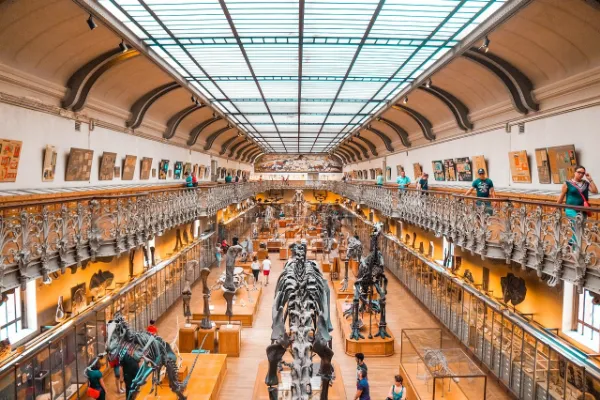
Dinosaur fossils have revolutionized our understanding of prehistoric life. Here are just a few of the insights gained from fossil studies:
- Evolution: Fossils help track evolutionary changes over time, showing how species adapted to changing environments.
- Behavior: Nesting sites and trackways reveal social behaviors, parental care, and hunting strategies.
- Climate and Environment: Fossilized plants and animals found alongside dinosaurs help reconstruct ancient ecosystems and climate conditions.
- Extinction Events: Fossil layers offer clues about the catastrophic events, like asteroid impacts, that led to mass extinctions.
The Role of Paleontology
Paleontology is the scientific study of ancient life through fossils. Paleontologists use tools ranging from rock hammers to high-tech imaging techniques to extract, preserve, and analyze fossils.
Their work often involves field expeditions to remote locations and painstaking lab work to clean and reconstruct fossilized bones.
Modern paleontology is increasingly interdisciplinary, drawing on geology, biology, chemistry, and even computer science to better understand the fossil record.
Protecting Fossil Sites
As interest in dinosaurs grows, so does the need to protect fossil sites from illegal excavation, looting, and destruction. Many countries have laws regulating fossil collection, and ethical paleontology promotes careful documentation and preservation. Fossils are not just collectibles—they are irreplaceable scientific resources.
A Continuing Journey
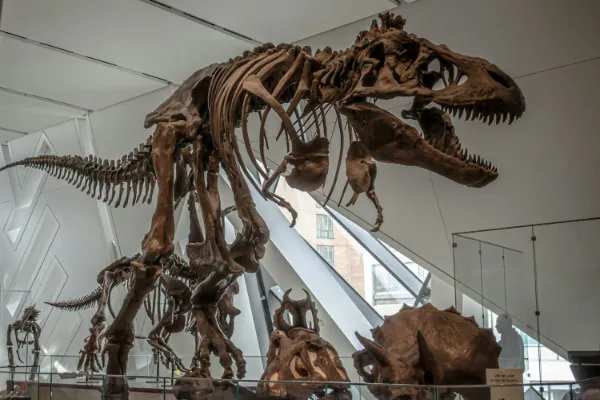
Even after centuries of study, we are only beginning to understand the full story of the dinosaurs. New discoveries are made every year, and each one has the potential to rewrite what we know. From tiny feathered raptors to towering sauropods, fossils continue to breathe life into the distant past.
For scientists, educators, and enthusiasts alike, dinosaur fossils are not just remnants of a lost world—they are keys to unlocking the grand story of life on Earth.
Frequently Asked Questions (FAQ) About Dinosaur Fossils
1. What is a dinosaur fossil?
A dinosaur fossil is the preserved remains or impression of a dinosaur. Common examples include bones, teeth, footprints, and skin impressions. These fossils form over millions of years through natural processes that turn organic material into rock.
2. How are dinosaur fossils formed?
Fossils are typically formed when a dinosaur dies and is quickly buried by sediment like mud or sand. Over time, minerals seep into the bones or impressions, gradually replacing the organic material and turning it into stone—a process known as permineralization.
3. Where are most dinosaur fossils found?
Dinosaur fossils have been found on every continent, including Antarctica. Some of the most productive fossil sites are in North America (Montana, Utah, Alberta), China, Argentina, and Mongolia.
4. What types of fossils are there?
There are several kinds:
- Body fossils (bones, teeth)
- Trace fossils (footprints, nests)
- Impression fossils (skin or feather imprints)
- Coprolites (fossilized dung)
- Gastroliths (stomach stones)
5. What can we learn from dinosaur fossils?
Fossils help scientists understand:
- What dinosaurs looked like
- How they moved
- What they ate
- How they behaved
- The environments they lived in
- How they evolved over time
6. Are all dinosaur bones we see in museums real?
Not always. Many displays include a mix of real fossils and scientifically accurate replicas. Real fossils are often too heavy, fragile, or rare to be exhibited in full.
7. What is the most famous dinosaur fossil ever found?
One of the most famous is Sue the T. rex, discovered in South Dakota in 1990. Sue is one of the largest and most complete Tyrannosaurus rex skeletons ever found and is displayed at the Field Museum in Chicago.
8. Are birds really related to dinosaurs?
Yes! Modern birds evolved from small, feathered theropod dinosaurs. Fossil evidence—especially from China—confirms this evolutionary connection.
9. Can I dig for dinosaur fossils myself?
It depends on local laws. In many areas, collecting fossils without permission is illegal. It’s best to join supervised digs led by museums or universities to learn proper techniques and follow ethical guidelines.
10. What’s the difference between a fossil and a bone?
A bone is original biological material. A fossil is that bone after it has been mineralized over time, turning it into rock. So, while they may look alike, fossils are chemically different from fresh bones.
11. Are new dinosaur species still being discovered?
Yes—dozens of new species are discovered each year! Paleontology is a constantly evolving field, and fossil finds frequently lead to new insights and even reclassification of known species.
12. What should I do if I think I’ve found a fossil?
Don’t try to remove it. Take photos, note the location, and report it to a local museum, university, or geological survey. Proper excavation and documentation are essential for scientific study.